Last weekend, I and a few friends met up outside the San Francisco Palace of Fine Arts (POFA). Amidst swarming pigeons, groups of tourists, and photographers taking family photos, we joined a line of folks gathered outside a formidable green door. In front, a banner stood shining like a beacon in the muddled morning grey–welcome to the San Francisco International Tea Festival.
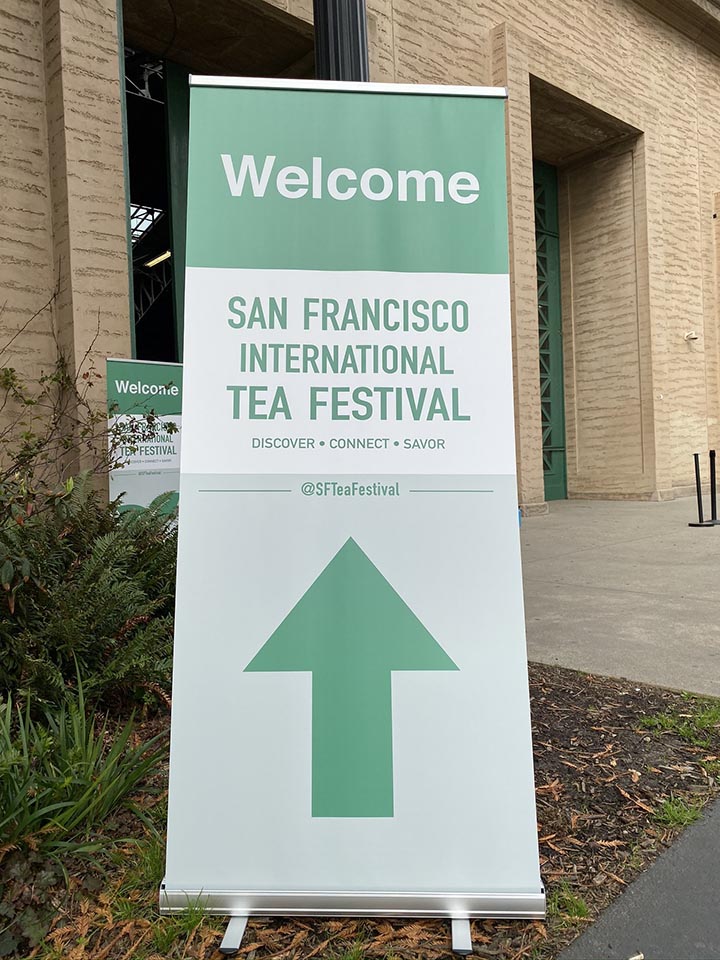
The Venue
The change of this year’s venue alone isa huge departure from previous years’ events, all of which were held on the second floor of the historic San Francisco Ferry Building. The Ferry Building is a wonderful place, but it is a bad event space if you have a mob of caffeine-fueled fanatics trying to squeeze through crowds to get another cup of that 20 year-old aged puer from Xishuangbanna.
Add in a strict “no re-entry” policy, a dash of crowded bathrooms, and a distinct lack of food options and you’ve got a recipe for something nobody wants to eat but will do so purely out of a desire to survive. (Yes, the Bay Area is that starved for good tea events.)
This is what it used to look like:
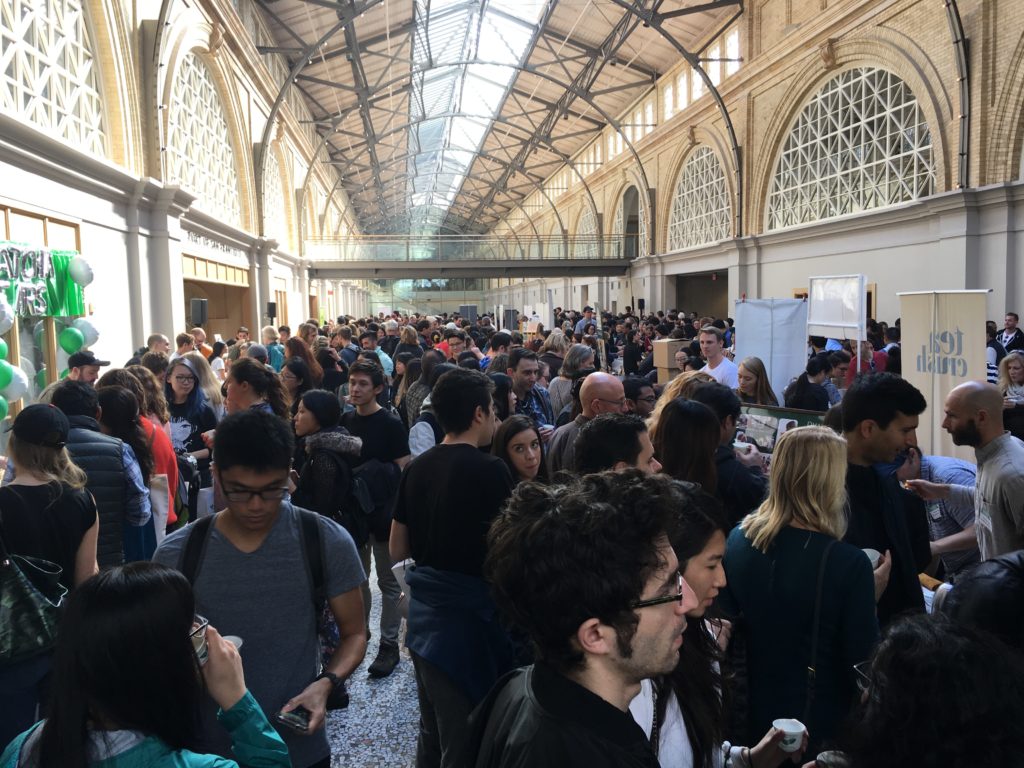
By contrast, the space at the POFA was wide open and offered ample room for groups and individuals alike to make space for one another, even as they congregated around their favorite vendors’ tables. There were food options and even a nice picnic table seating area in the middle.
On top of all that, this year they allowed re-entry. It feels strange to celebrate that in 2019, but it’s a very welcome change.
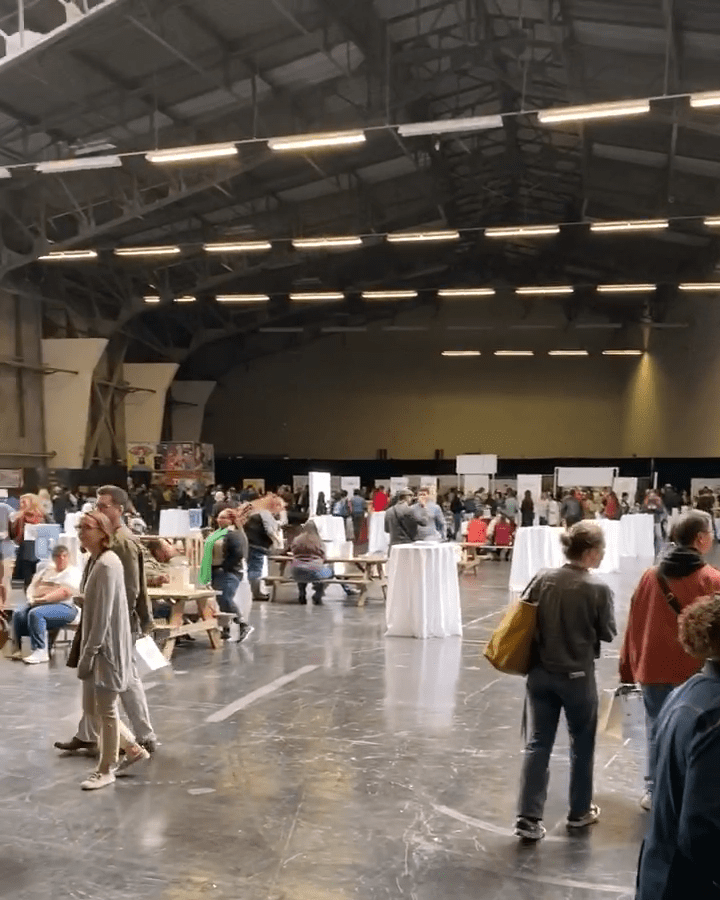
The People
The crowd for this event is getting younger. In the past two years I got the feeling most of the attendees were more towards middle-age and above. This year I noticed a much higher showing from college and school-aged kids.
By the Sugimoto booth, a college-age couple with blue hair and a PAX hoodie (PAX is a large gaming convention in the US) gushed about Japanese tea and matcha. At Pure Puer, I saw a group of teenage girls tasting aged puer together with what was likely someone’s mom.
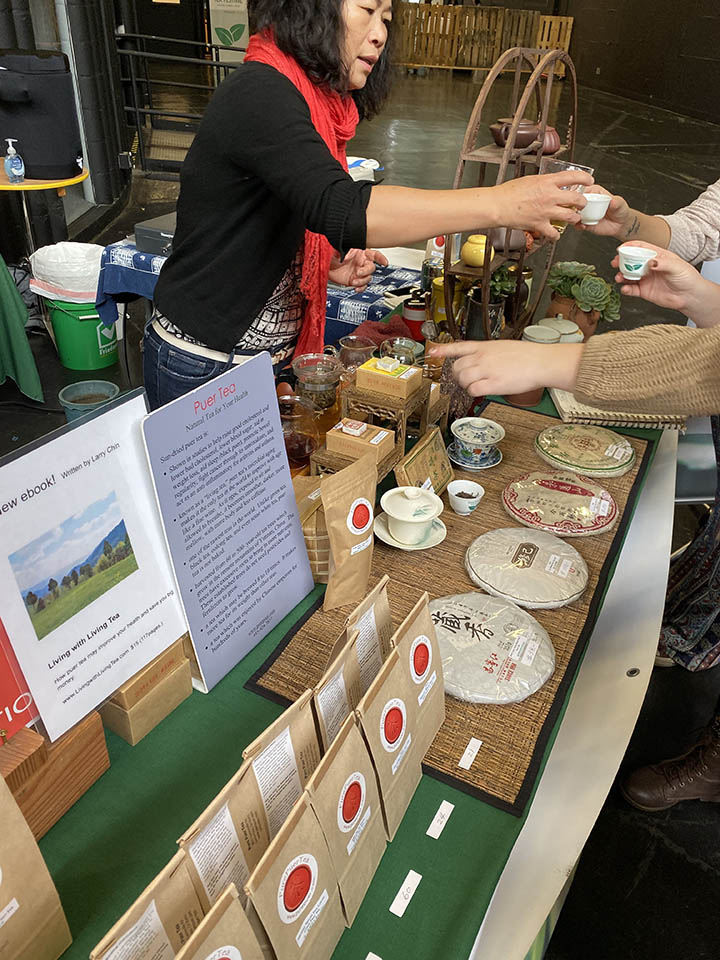
This anecdotal observation jives with the recent Thrillist piece titled “Artisanal Tea in America Is Having A Moment”, wherein author Kevin Alexander points out Gen Z and Millennials are eschewing coffee for alternative beverages.
Fresh faces in tea is cause for celebration, and I hope to see this trend continue well into the future.
The Vendors
The event is getting better at balancing tea for enthusiasts against tea for everyone. In addition to some of the usual characters (Imperial Tea Court, Denong, Sugimoto, Tillerman’s, Glenburn), there were a few new companies such as Zuowang, Kagoshima Seicha, and Jing Si that added interesting new offerings to the show.
Harney & Sons rolled out a full gongfu tea operation with 8-10 seats situated around a low table. Eric Scott joined Harney’s tea master in serving out brews to thirsty guests. One notable missing component from Harney’s offering this year was Jin Jun Mei, which I got from them last year at a steal of a deal.
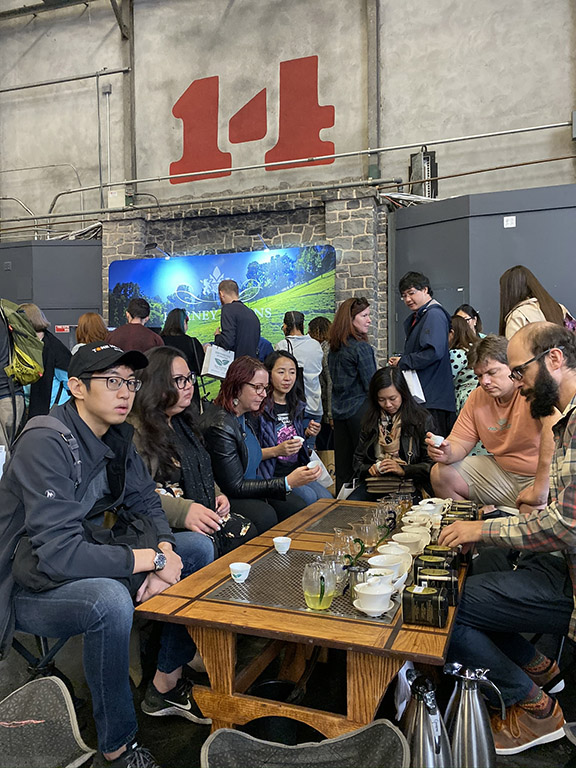
I was particularly happy to meet Forest of Zuowang. He had a gorgeous iron kettle he was using to heat water, some wonderful tea to share, and overall a wealth of knowledge on his tea and its provenance.
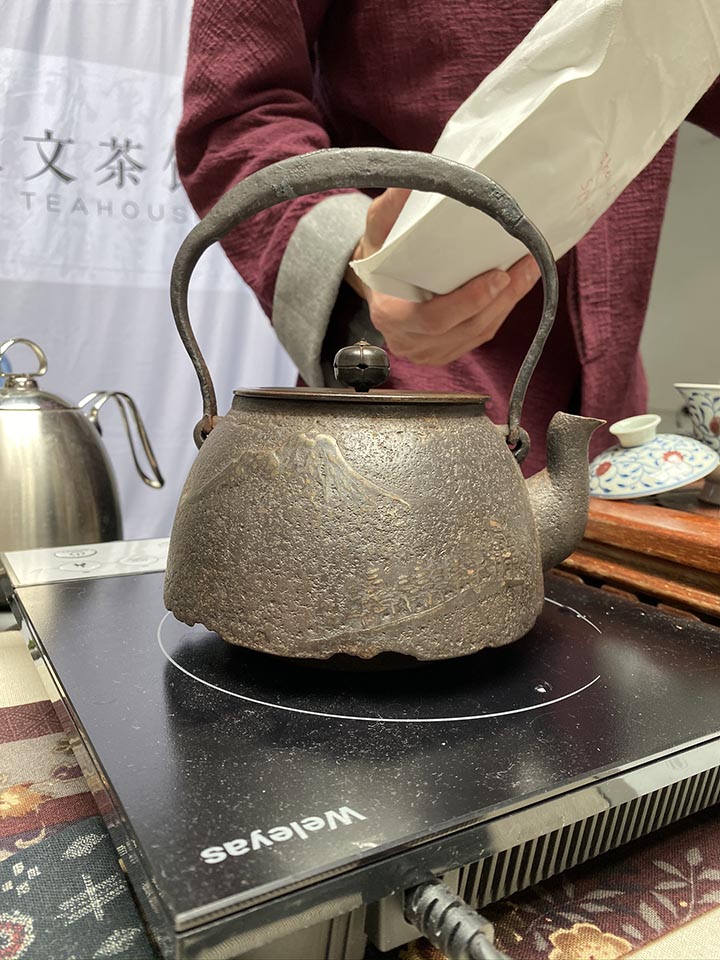
One vendor that surprised me was Sugimoto USA. It’s not that they don’t have good tea or haven’t had good tea in the past, but this year they brought in a new matcha offering (“Suzuki”) unlike anything I’d had before. They also carried handmade whisks and scoops from Kubo Sabun, a reknowned family of bamboo utenstil craftsmen whose history stretches back 500 years!
I was happy to see a vendor of their size bringing something new and interesting to the US market.
I am still somewhat confused by the lack of presence by local brands such as Samovar, Song Tea, Red Blossom, and others. I was also sad to see Yerba Buena didn’t attend this year. I hope to see some change happen here in the future.
The Content
One area this event still has room to grow is in the area of tea-related panels, lectures, and content. Whereas other tea events around the country are packed with content for all levels of familiarity and experience, SFITF still feels lacking in this particular area.
Lectures like matcha 101, adding more turmeric to your diet, and the health benefits of puer are probably targeted at the largest swathe of festival attendees, but it feels like a missed opportunity to provide something for the nerds out there as well. Why not bring someone down from UC Davis? How about discussions around how tea businesses are structured? Maybe a discussion on sustainability and the future of tea? (You’ll be hearing more from me on this subject on the blog soon.)
It’s a disservice to the festival-goer to handle them with the kiddie gloves. Let’s pack some punch into the content side of the event.
The Tea Haul
Of course, no discussion of my event experience is complete without sharing what I bought!
I went in this year with very clear rules: ripe puer, dianhong black tea, or bust. While I didn’t successfully find anything that made me want to open my wallet, I did find something else I decided to go in on: matcha and tea utensils.
Sugimoto’s Suzuki matcha and their handmade tea utensils were simply too good to pass up. I got a can of the tea, a whisk, and a scoop all in one fell swoop. I was happy to go home with just a few things I’m really excited about and nothing else.
Conclusion
Overall, I’m very pleased with the growth of SFITF in 2019. The venue change alone made a huge difference. Coming in to this year I wasn’t sure if this event would be my last. I’m happy to say I’ll be back for a fourth year next year for sure.
I may even consider reaching out to try to organize some better content. After all, it’s easy to sit here on my blog and complain about a derth of good educational content. Things would be much better for everyone if I try to be the change I want to see in the event!
Well done, SFITF team. Looking forward to a strong 2020 event next year!
